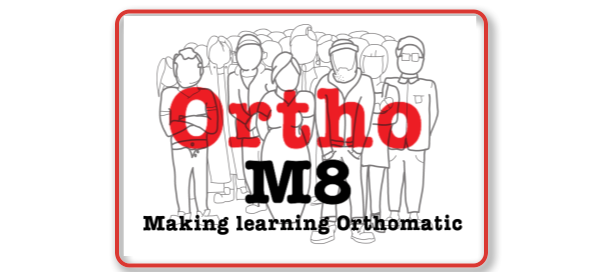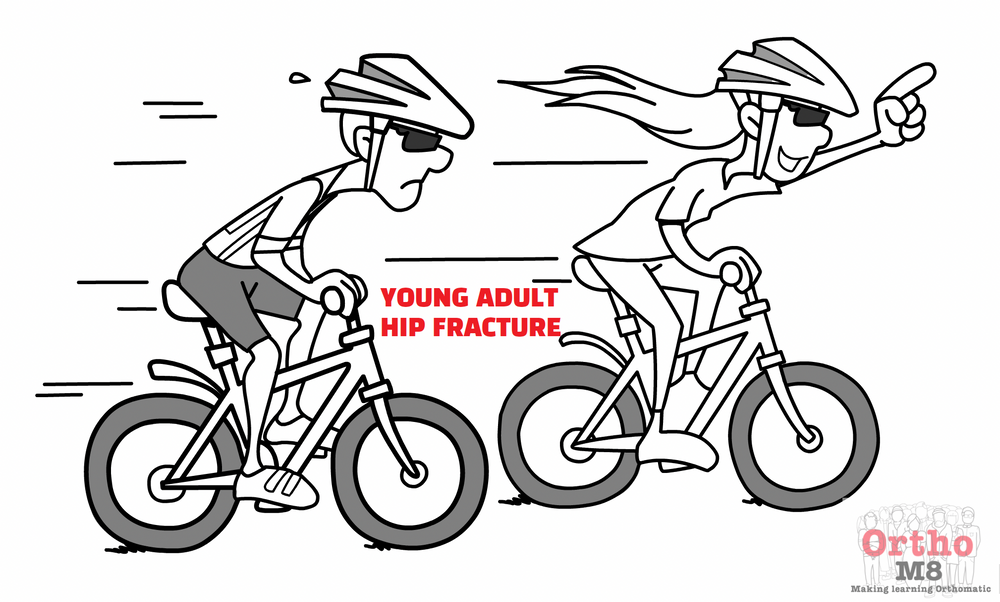This provides the usual demonstration of higher order thinking. The majority who have worked in local hospitals are used to hip fractures occurring in the elderly but it is a different challenge in a young adult patient.
Young adults generally have good bone quality and therefore only sustain injuries under high energy typically.
- The first port of call is managing the whole patient
An assessment of other injuries is essential in a young adult patient with a hip fracture to make sure it is an isolated injury.
Once this is established the discussion pivots to the nature of the hip fracture - usually in high energy injuries in a young adult there is some posterior comminution on the lateral view as well as a high Pauwel's angle.
Like all hip fractures the blood supply is compromised to the femoral head and there is a risk of avascular necrosis/non-union.
By pointing these things out one can demonstrate familiarity with the injury and then proceed to tell the examiner about the different options for management.
In an elderly patient you would be thinking about replacing the femoral head+/-acetabulum with a Hip Hemiarthroplasty or a Total Hip replacement. However in this patient the discussion is shifted to fixation as the ideal in this patient is to retain the native femoral head.
Approaches to the hip need to be well practiced. You should have discussed this with a senior colleague and be clear as to the merits of each. If you have dealt with this type of injury then it is easy to put across the tips that will differentiate you from those who haven't.
- Will you take this patient to Theatre in the middle of the night?
- How will you position the patient?
- How will you reduce the fracture?
- Which approach will you use?
The literature suggests that the most important thing to achieve is anatomical reduction.
The 6 hour rule, whereby you had to deal with this injury within that time, is no longer relevant.
The procedure should be done as soon as possible by a surgeon best placed to achieve an anatomical reduction, whether through closed or open reduction. This is often a surgeon who specialises in hip pathology.
The positioning would depend on whether one is able to achieve a closed reduction and the options for approaches.
Closed reduction is classically achieved using the Leadbetter maneuver.
Leadbetter's maneuver involves 3 steps
1) Flex the hip to 90 degrees
2) Slight adduction
3) Inline traction + internal rotation
This should be attempted once and if this fails an open approach is needed to reduce the fracture anatomically.

